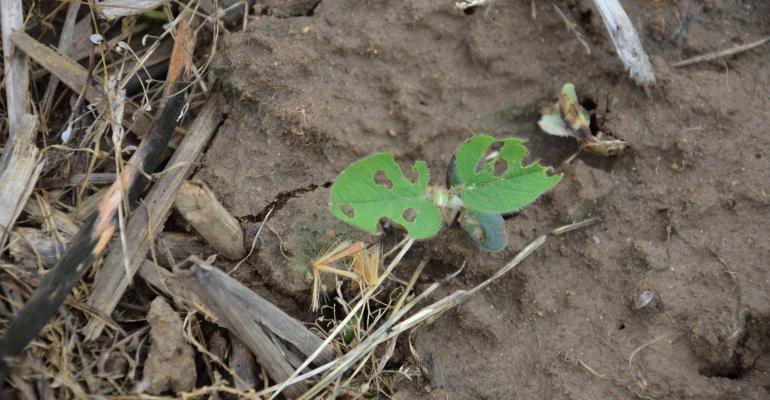Sort through soybean seed treatments

Soybean Pest Beat: There are numerous seed treatment options for various purposes.
Jan 02, 2019
My company offers a seed treatment package for soybeans with fungicides, another option with fungicides and insecticides, and then I could add ILeVO for sudden death syndrome or a nematode product, both separate and both at an upcharge. How do I know what to add, if anything?
The Indiana certified crop advisers panel answering this question includes Andy Like, Syngenta sales rep, Vincennes; Jeff Nagel, agronomist with Ceres Solutions LLP, Lafayette; and Darrell Shemwell, agronomist with Posey County Co-op, Poseyville.
Like: A starting point would be historical nematode and SDS pressure in your fields. Only consider using extra treatment where you’ve had issues in the past. The nematode problem can be quantified by sampling to determine your level of nematode pressure. Additionally, consider treating beans that lack genetic resistance to nematodes found in your area.
The SDS question is more difficult. It doesn’t seem to be a problem every year in every field. If you have a history of getting SDS in certain fields and you want to plant them early, you would likely see a return from treating.
Nagel: As soybean planting dates have moved earlier, most farm operations have recognized the value of a good seed treatment for early-season stand establishment. Here are considerations for each component:
• A quality fungicide mix that protects against early-season seedling blights provides good return on investment and has allowed seeding rates to be reduced. Make sure rates are adequate to protect against pythium, phytophthora, fusarium and rhizoctonia.
• An insecticide will protect against early-season bean leaf beetle and seed corn maggot. You’re most likely to see an ROI in conservation tillage fields — particularly with cover crops, manured fields and/or fields with moderate to heavy winter annual weed pressure terminated near planting.
• For nematicide, there’s good evidence that the PI88788 source of resistance used widely and in a high percentage of soybean varieties is no longer offering the same level of protection. There are several nematicides and biological seed treatments now available. Third-party research is hard to find. Data on ILeVO is much more extensive and supports use in fields where SDS has been a concern and/or there is soybean cyst nematode pressure. Farmers aren’t routinely testing for SCN, but testing would help guide a better decision. On-farm testing would be beneficial to determine a yield benefit.
Shemwell: For growers shooting for top yields, we always use seed treatments. Our normal treatment is a fungicide-insecticide treatment, but if we’re planting soybeans in April, we add ILeVO to give protection against SDS. In our area, SDS has been a problem for many years. By treating with ILeVO, we’ve been able to plant soybeans earlier and select varieties that have higher yield potential. We’ve seen a 2.5- to 3.5-bushel-per-acre yield increase in soybeans that were treated with ILeVO even in years where there were no SDS symptoms.
ILeVO also has some activity on SCN, and we’ve seen some dramatic yield increases in sandy soils where ILeVO was applied.
Bayer has reintroduced NemaStrike nematicide for 2019 on both corn and soybeans, and is touting significant yield increases. We plan on using it on both corn and soybeans in 2019, especially on lighter soils, to see how it can benefit growers.

